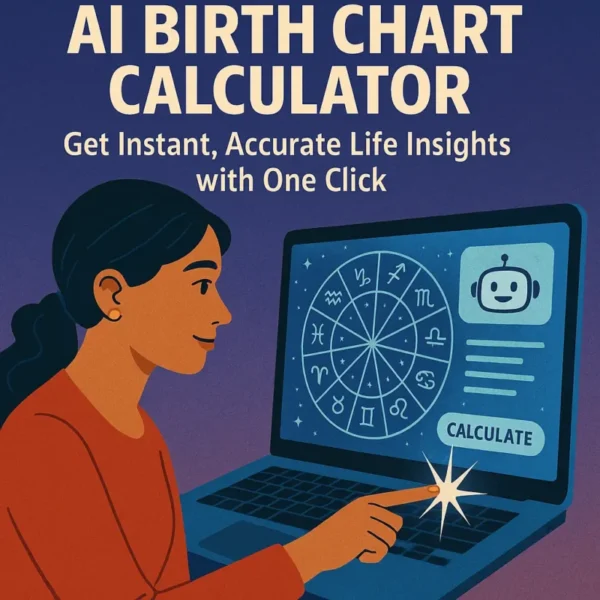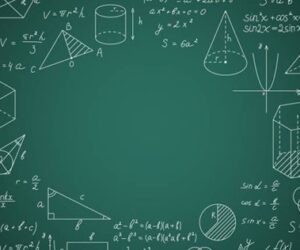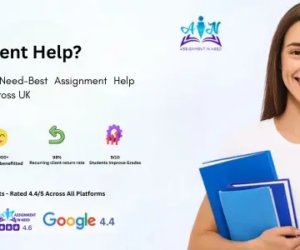Astrology has long revolved around patterns—the arrangement of planets, their movements in the zodiac, and interpreting their positions in relation to human life. For centuries, astrologers have observed and uncovered patterns from the cosmic blueprint called the birth chart or natal chart to learn more about personality, relationships, destiny, and all that encompasses a human being.
Astrology appears to be undergoing a significant shift in the era of artificial intelligence. Where data were previously displayed in paper journals or calendars—with hand-drawn charts using algebraic equations and calculations—now they can be delivered to you in a sophisticated artificial intelligence birth chart calculator, which would have previously taken an astrological practitioner many hours to calculate, in a matter of seconds and with the simplest click of a button. These AI tools are doing much more than simply replicating the manual work; they also consider consequences or meaning—data-driven personalisation, machine learning, and even natural language vehicles of explanation—moving us to the most accessible and comprehensive astrology of all time.
But how do these astrology chart calculator processes actually work? What occurs behind the algorithm when I enter my date, time, and place of birth? And even further, can artificial intelligence capture the essence of a deep-seated and ancient art form?
This article looks at the inner workings behind the calculations, science, and philosophy around astrology birth charts—pulling back the digital curtain to show how technology is reshaping a practice that originated based on the stars.
What Is a Birth Chart?
Essentially, a birth chart (or natal chart) is a map of the placement of the celestial bodies at the time and location of a person’s birth. It shows where the Sun, Moon, and planets were in relation to Earth at the time of the individual’s birth, and uses the zodiac signs as the backdrop.
A traditional birth chart incorporates the following elements:
- The Zodiac Signs – The 12 signs (i.e., Aries to Pisces), each with distinct characteristics
- The Planets – The Sun, Moon, Mercury, Venus, Mars, Jupiter, Saturn, Uranus, Neptune, and Pluto (and possibly other planetary interactions, like Chiron). Each planet governs areas of human life.
- The Houses – 12 components of the houses that affect areas of life like work, love, family, and health.
- Aspects – The geometric angle that planets form with each other (for example, conjunctions, trines, squares, oppositions, etc.), show tension or harmony.
Astrologers figured out the placements by using calendars, which are astronomical tables for calculations, and then they interpreted the chart by using symbolic abstract meaning that has been passed down over hundreds, perhaps thousands of years.
AI-generated birth charts summarize all of the above in a matter of milliseconds.
Step 1: Collection of Data Input
The first step in any AI birth chart program is the data input:
Date of Birth—This data alone will determine where the planets were positioned on that date.
Exact Time of Birth—This is what determines the Ascendant (rising sign) and house placements. Even a small difference in minutes will alter the results.
Place of Birth—It is the location’s latitude and longitude which determines the position/respective orientation of the sky above the earth.
These three types of input (date, time, and place) will serve as the raw materials for both astrologers, as well as AI-powered calculators.
Step 2: The Actual Astronomical Calculations
Once you input all the birth data, the algorithm moves to actual astronomical computation. Current AI birth chart generators process databases of planetary positions, usually from NASA’s Jet Propulsion Laboratory (JPL) registers or databases deploying other high-end astronomical data.
Then the AI determines:
Exactly where each of the planets’ longitudes and latitudes were positioned at the exact moment of one’s birth.
Where the Ascendant is positioned (the zodiac sign that was on the eastern point of the horizon).
And where the Midheaven (the highest point in the sky) is positioned which is also tied into one’s career/publication in life.
And, if using a specific mathematical system (e.g.: Placidus, Whole Sign, Koch), the precise positions of where in the sky the twelve divisions of “houses” are relative to each other.
At the end of the process, The AI essentially moves
Read Also: Richest Footballers In The World 2025 Faiq Bolkiah, Ronaldo, Messi, Neymar & Beckham
Step 3: Recognition of Patterns and Symbolic Mapping
Next comes the interpretative phase. Birth charts are more than coordinates – they are symbols, and those symbols map to archetypal meanings. Each planet, sign and house has an associated meaning. AI birth chart calculators assign the physical positions of planets to the symbolic representations of astrological archetypes.
Sun in Leo → self-expression, creativity, leadership
Moon in Scorpio → emotional intensity, depth, transformation
Venus in the 7th house → themes of love and partnership
Saturn square Mars → tension with discipline and issues with ambition
The artificial intelligence algorithms are essentially conducting simple pattern matching of astrological coordinates to a symbolic database.
Step 4: AI Interpretations and Natural Language Generation
This is the biggest departure from traditional astrological chart readings. Conventional chart readings depend heavily on the astrologer’s interpretive skills, intuition and style. AI birth chart calculators use Natural Language Processing (NLP) algorithms and generative models to translate the raw astrological data into intelligible readings.
Rather than just providing information about the
“Moon in Scorpio, 8th house”
The AI can generate the following comments:
“Your moon in Scorpio indicates deep emotional intensity and a natural pull towards transformation and rebirth. Because it is the 8th house, you go through profound shifts with relations, typically learning how to let go and create strength during your relationships– leading to building new connections.”
Some of the advanced AI have even created algorithms that personalize the tonality– while some stay in the mystical.
Step 5: Machine Learning and Personalization
Not all AI astrology tools are created equal. Some go beyond static interpretations by employing machine learning (ML) models that have been trained on extensive data of user feedback and historical interpretations.
User Input Loop: As a user interacts with their charts and provides feedback (e.g, “this resonates” or “not accurate”), the AI optimises whatever future outputs in that process.
Behavioural Data: Some apps that provide personalised astrology readings feature inputs such as journaling, quizzes, or personality surveys that the app leverages to personalise/readjust the user’s reading.
Adaptive Predictive Modelling: AI tools offering personalised astrology may have the ability to adapt readings based on timing or as planets are transiting into constellation signs over time, which may provide a different reading at a later date.
In short, the algorithms “learns” to a degree what type of interpretations work for individuals possessing certain placements in their natal chart.
Step 6: Layering Predictive Astrology
In addition to the natal chart being interpreted, AI calculators also have predictive layers -:
Transits – Present part of the predictive chart by databasing the current position of planetary movement, comparing it to the natal chart. But again, it provides the user with an even more reason to continue subscribing to the service, since it feels individualised to the client, when compared to static interpretations.
Progressions – “Symbolic day-for-a-year techniques” that indicate stages of life.
Solar Returns – Predisposes readings based on when each birthday happens.
By calculating and projecting the more complex predictive layers, it allows AI to democratise predictive astrology to those who may only be tangentially close to being astrologically literate.
What Sets AI Birth Charts Apart from Traditional Astrology?
Both traditional and AI-led practice draw from the same astronomical principles, but the significant differences between the two are made most evident in three influential areas.
- Speed and Scale: Calculations happen instantly and for the masses.
- Efficiency and Accessibility: Users do not have to draw charts by hand or study astrology in depth.
- Accuracy and Consistency: Eliminates human error with math, but varying interpretations of the chart from an astrologer are still present.
While it is true that AI lacks human intuition or emotional intelligence, which many appreciate when consulting with a live astrologer, a seasoned astrologer might notice subtle themes, underline significant life events, or incorporate cultural or astrological context in ways an AI would likely not be able to replicate, at least not yet.
Can AI Capture the Meaning or “Soul” of Astrology?
Astrology is not just math– it is meaning. Negative critiques of AI-generated reading is that it is simply “cookie-cutter” or less than, or even worse, without depth. Proponents and advocate for AI-generated astrology would retort back that astrology itself is a symbolic form of storytelling and AI is simply another storyteller.
The more significant question is: Can algorithms contain intuition?
AI can find patterns, but it does not “feel” them. Some astrologers are concerned that this will take away the human, spiritual aspect of astrology and make it akin to fortune cookies, but others think that AI can democratize astrology and provide it to people who would never consult a professional astrologer.
Ethics in AI astrology
Like any application of AI, astrology software also raises ethical questions:
- Data Privacy – Birth data is personal, and people must trust platforms will keep it secure.
- Over-Reliance – People might depend on algorithms to make important life decisions rather than reflecting on a chart.
- Monetization & Manipulation – If there are paid readings or “premium insights,” it could take advantage of users looking for insight when they are vulnerable.
- Cultural Authenticity – There is potential that astrology practices (Vedic, Chinese, Western) could be reduced to a one-size-fits-all algorithm.
Astrology apps designed responsibly include disclaimers indicating readers are for guidance, not prediction, and an intent for the user to use a chart for self-reflection as opposed to being predicted fate.
The Rationale for Gen Z and Millennials Using AI Birth Charts
Younger generations, particularly Gen Z, are driving the rise of AI astrology tools.
- Digital-Native Lifestyle – They enjoy mobile apps and immediate answers.
- Customisation Culture – AI birth charts often seem personalised, similar to fitness apps, cart recommendations, and playlists.
- Science & Spirituality – The idea of AI “crunching the stars” fits within their hybrid paradigm.
- Community Sharing – Screenshots of birth charts circulate TikTok, Instagram, and Twitter as markers of social identity.
In this sense, AI astrology transcends the personal and becomes cultural currency.
The Future of AI Astrology
What will the future hold? Experts think several directions will take us into the future:
- AI Astrologer Chatbots – Virtual guides providing answers to, typically, specific questions, at any time of the day or night.
- Integration with Wearables – Combining astrology with health and emotional trackers for comprehensive self-care.
- Cross-Cultural Systems – A mix of Western astrology and Vedic astrology, and Chinese astrology in one AI system.
- Augmented Reality – The ability to see the planetary alignments in real time through augmented reality sky maps.
- Emotional AI – AI systems that will alter (interpretation) of the reading, depending on user’s mood, creating more empathy with the interaction.
There may always be half a science, and half a work of art. However, we will still make sure astrology exists in a digital, first-world.
Final Reflections: the Stars, the Self, and the Software
While AI birth chart calculators may feel futuristic, they are fundamentally carrying on humanity’s oldest passion: looking for meaning in the stars. By associating ancient symbolism with leading-edge technology, they do make astrology more accessible, data-driven, and engaging for many people.
At the same time, it is useful to acknowledge that AI platforms are tools, not oracles. A chart, whether drawn on paper by a human astrologer or generated through an algorithm, does not predict the future as much as reflect our self-perceptions.
In the end, the magic does not reside in the software, but in how individuals take those cosmic patterns of their potentials and make interpretations, reflections, and ultimately actions. The stars may nudge or suggest, but it is always a choice that communicates what you will ACTUALLY do.








